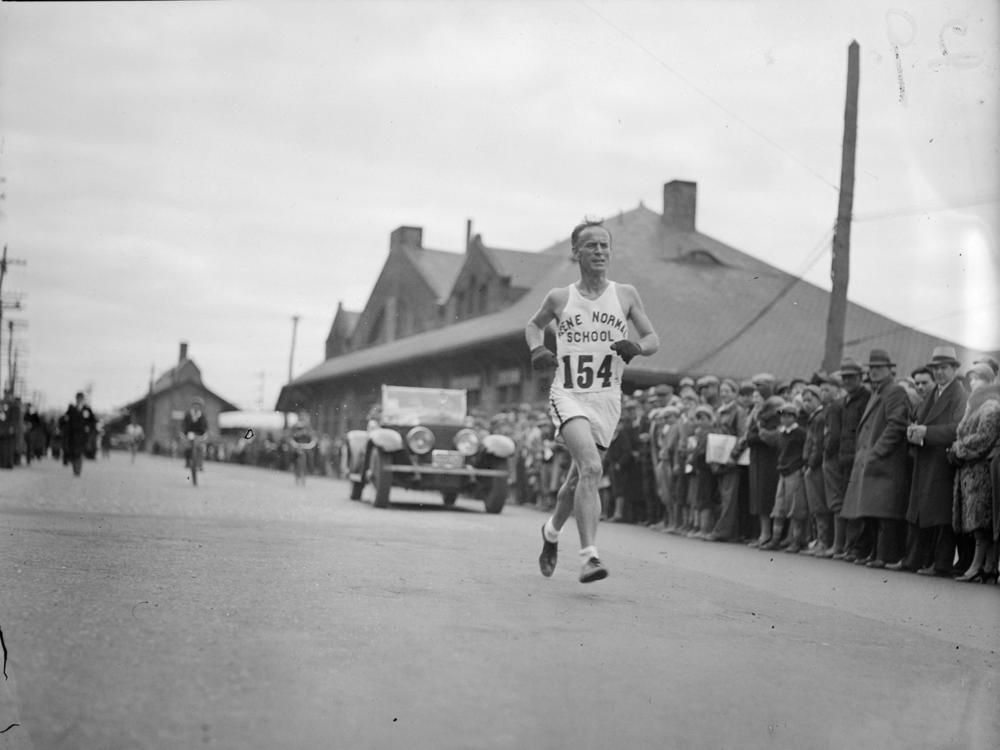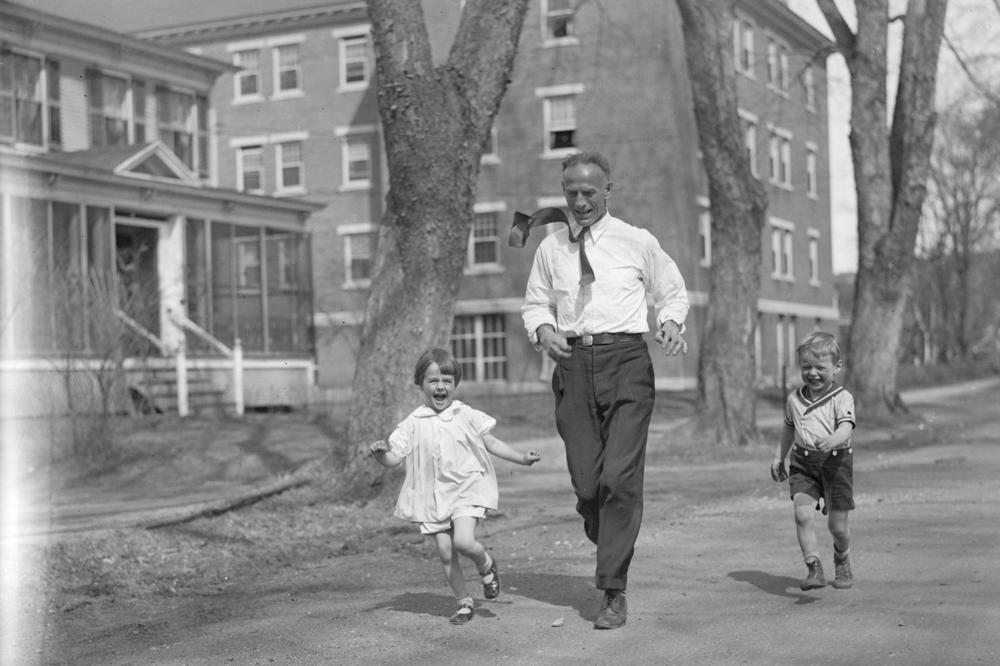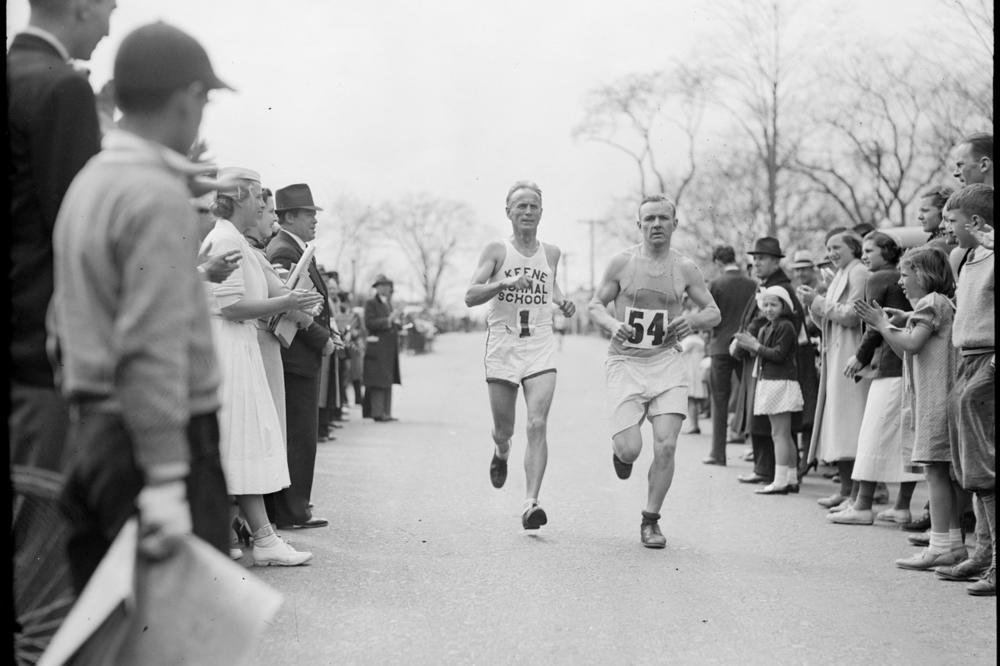Section Branding
Header Content
A study of this champion's heart helped prove the benefits of exercise
Primary Content
Clarence DeMar would train for races by running to and from his job at a print shop in Boston, up to 14 miles a day, often carrying a clean shirt.
His hard work paid off. He won the 1911 Boston Marathon and competed in the next year's Olympics.
But all that running raised eyebrows. At the time, many people – and medical experts – thought prolonged exercise was dangerous. A doctor, detecting a heart murmur, warned DeMar to quit the sport. Even his fellow runners told him not to attempt more than one or two marathons in his lifetime.
"He trained more than was commonly believed humanly possible at the time," said Tom Derderian, who's written an extensive history of the Boston Marathon. "He ran lots of mileage. And the idea in the past was that lots of mileage would wear you out – that you would die early."
DeMar proved them all wrong – both during his lifetime and after – in ways that helped change people's minds about the benefits of exercise, and foreshadowed questions researchers are still asking today about how it affects the heart.
He became one of the most dominant distance runners of his day, competing in two more Olympics and winning the Boston Marathon a record seven times between 1911 and 1930. He kept winning races well into his 40s. The press called him "Mr. DeMarathon."
After he died of cancer at age 70, two Boston-area cardiologists took a look at his heart. What they found contradicted all those dire warnings.
Not only was DeMar's heart in good shape, his arteries were two to three times the size of a typical person's – reducing the risk of a fatal blockage.
The study, published in the prestigious New England Journal of Medicine in 1961, made the front page of the Boston Globe.
"It was one of those first studies that taught us that the human body can really handle, very healthfully, lots and lots of exercise," said Dr. Aaron Baggish, a professor at the University of Lausanne in Switzerland and the former medical director of the Boston Marathon.
Running's popularity exploded in the decades after DeMar's death, as further research backed that up. It's now well-established that regular aerobic exercise makes us healthier and prolongs our lives.
Or as Dr. Jonathan Kim, a sports cardiologist at Emory University, likes to put it: "Exercise is truly medicine."
At the same time, researchers in recent decades have also been learning more about a version of the question that faced DeMar a century ago – whether running as much as he did has side effects.
For instance, atrial fibrillation – a type of irregular heartbeat – seems to affect some middle-aged athletes who've trained at very high volumes for years, men in particular. For whatever reason, says Baggish, "women are almost uniformly more protected from all forms of heart disease, including those that are associated with sport."
Recent studies have also observed evidence of plaque buildup in the arteries of some lifelong endurance athletes.
But Kim says it's not yet clear what, if anything, that means for their overall health outcomes. In general, people with a high degree of cardiorespiratory fitness from years and years of aerobic training still tend to have better outcomes when it comes to heart health.
"There's nothing to suggest that the ultra endurance athlete dies from heart disease sooner than people who aren't engaged in that activity," he said.
Researchers are still trying to understand exactly what's going on there, but highly trained athletes do tend to have larger arteries, so the presence of plaque may not narrow the vessels enough to restrict blood flow.
DeMar's autopsy, in fact, showed he had "moderate atherosclerosis," or plaque buildup – but because his arteries were so much larger, "they were not narrowing, they were not obstructing, they did not block flow," said Dr. Paul D. Thompson, the chief of cardiology emeritus at Hartford Hospital in Connecticut.
Athletes also just have stronger cardiovascular systems overall, said Thompson – an accomplished marathoner who qualified for the 1972 Olympic Trials and, inspired partly by DeMar, trained by running to and from work as a busy young doctor.
"If you're able to do a lot of exercise, you've got a good heart," he said. "And as the old Timex commercial from the 1950s said, if you've got a good strong heart, perhaps it can take a lickin' and keep on tickin'."
As for that heart murmur the doctor warned DeMar about? Thompson says we now know that highly trained athletes often have a heart murmur, and it's benign. It's just their hearts pumping more blood with each stroke.
"That creates turbulence, and turbulence, just like a rapidly flowing river, creates noise," he said.
Most research indicates that doing increasing amounts of exercise is associated with lower rates of cardiovascular disease and death overall, though the gains get smaller as you do more and more.
Thompson says there's still some debate about whether there may be a slight uptick in mortality risk among the most extreme exercisers, though existing data are limited given how few people fall into that category. Some studies have raised that possibility, though others – including a 2020 meta-analysis that pooled the results of past studies – have found no evidence of it.
Meanwhile, research on elite endurance athletes, like Tour de France riders, finds they tend to outlive everybody else.
Baggish, the former Boston Marathon medical director, says avid endurance athletes should listen to their bodies. But if they enjoy pushing their limits, he doesn't see a reason for most people to stop – especially given that they probably derive important social and mental-health benefits from their sports.
"Going from doing no exercise to doing even small amounts of exercise has tremendous health benefits," he said. "As you continue to increase that level of exercise, you reach a point of what we call diminishing returns."
But "that's a very different thing than saying that too much exercise causes harm."
For most of us, of course, the concern isn't getting too much exercise – it's getting too little. The current national guidelines recommend at least two and a half to five hours of moderate exercise like walking each week, or an hour and fifteen minutes to two and a half hours of vigorous activity like running – and research suggests more is generally better.
In any case, many runners say they're not just doing it to stay healthy.
"It makes me feel alive," said Thomas Paquette, who manages Ted's Shoe and Sport, a running store in Keene, N.H. "It's kind of my drug. You know, I'm addicted to it. If I don't run, I'm not the same person."
Clarence DeMar lived in Keene for part of his racing career, and he's still a local legend.
There's a mural of him downtown. The running store's animatronic mannequin is nicknamed "Clarence." On Sunday, hundreds of runners will line up for the 45th annual Clarence DeMar Marathon, which finishes in town.
Paquette says it's not just DeMar's victories and dedication that inspire him. It's also that the man simply loved running. DeMar ran his last race, a 15K in Maine, just weeks before his death.
Paquette hopes to follow in his footsteps.
"The goal is to be a lifelong runner, for sure," he said. "I see my parents. My dad just turned 80 yesterday and my mom is 70, and they still are running too."
Runningpast.com helped source archival audio for this story. Story edited for web by Carmel Wroth and for broadcast by Amina Khan.
You can watch footage of Clarence DeMar winning the 1930 Boston Marathon — his seventh victory, at age 41 — here.
Copyright 2023 NHPR. To see more, visit NHPR.




